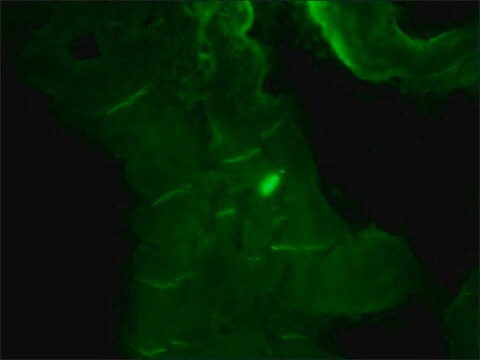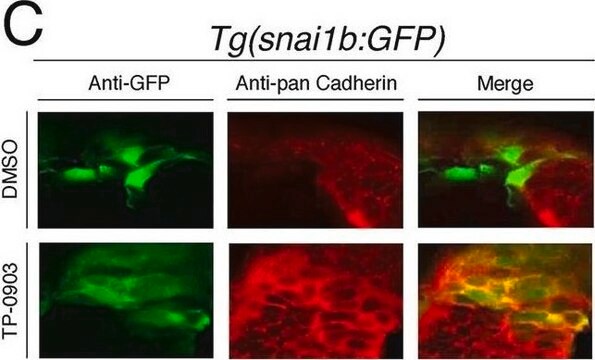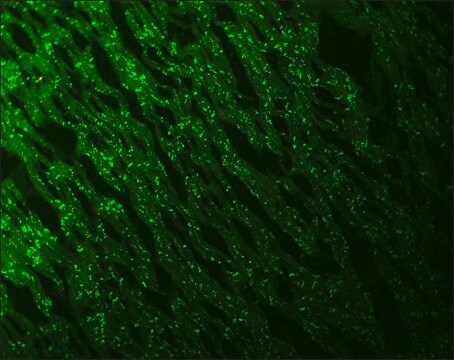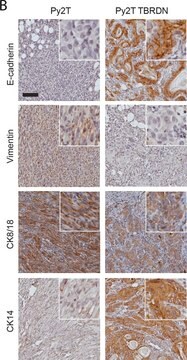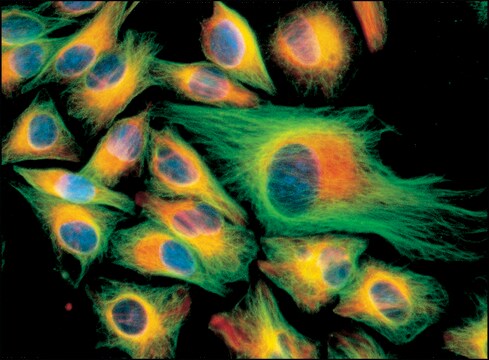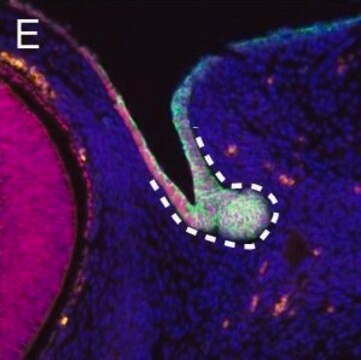C1821
Monoclonal Anti-Pan Cadherin antibody produced in mouse
clone CH-19, ascites fluid
Synonyme(s) :
Monoclonal Anti-Pan Cadherin
About This Item
Produits recommandés
Source biologique
mouse
Conjugué
unconjugated
Forme d'anticorps
ascites fluid
Type de produit anticorps
primary antibodies
Clone
CH-19, monoclonal
Poids mol.
antigen 135 kDa
Contient
15 mM sodium azide
Espèces réactives
canine, frog, snake, guinea pig, chicken, pig, feline, bovine, rabbit, hamster, Psammomys (sand rat), goat, rat, human, sheep, mouse
Technique(s)
immunohistochemistry (formalin-fixed, paraffin-embedded sections): 1:500 using protease-digested animal heart sections
indirect immunofluorescence: 1:500 using cultured MDBK cells
microarray: suitable
western blot: suitable
Isotype
IgG1
Numéro d'accès UniProt
Application(s)
research pathology
Conditions d'expédition
dry ice
Température de stockage
−20°C
Modification post-traductionnelle de la cible
unmodified
Informations sur le gène
human ... CDH1(999) , CDH2(1000) , CDH3(1001)
mouse ... Cdh1(12550) , Cdh2(12558) , Cdh3(12560)
rat ... Cdh1(83502) , Cdh2(83501) , Cdh3(116777)
Vous recherchez des produits similaires ? Visite Guide de comparaison des produits
Description générale
Cadherins that are primarily located in areas of cell-cell contacts are involved in selective cell sorting and in the mechanical cytoplasmic response. They are implicated in morphogenetic processes, intercellular signalling and in tumor invasiveness and metastasis.
Multiple cadherins have been characterized from diverse species and tissues including E-Cadherin, N-Cadherin (A-CAM), P-Cadherin, V-Cadherin, R-Cadherin and T-Cadherin. Specific polyclonal antibodies against a highly conserved sequence from the cytoplasmic C-terminal of N-Cadherin has been prepared.
Spécificité
Immunogène
Application
- fluorescence imaging
- immunohistochemistry
- western blotting
- immunoblotting
- immunofluorescence
Actions biochimiques/physiologiques
Clause de non-responsabilité
Vous ne trouvez pas le bon produit ?
Essayez notre Outil de sélection de produits.
En option
Code de la classe de stockage
12 - Non Combustible Liquids
Classe de danger pour l'eau (WGK)
nwg
Point d'éclair (°F)
Not applicable
Point d'éclair (°C)
Not applicable
Certificats d'analyse (COA)
Recherchez un Certificats d'analyse (COA) en saisissant le numéro de lot du produit. Les numéros de lot figurent sur l'étiquette du produit après les mots "Lot" ou "Batch".
Déjà en possession de ce produit ?
Retrouvez la documentation relative aux produits que vous avez récemment achetés dans la Bibliothèque de documents.
Les clients ont également consulté
Notre équipe de scientifiques dispose d'une expérience dans tous les secteurs de la recherche, notamment en sciences de la vie, science des matériaux, synthèse chimique, chromatographie, analyse et dans de nombreux autres domaines..
Contacter notre Service technique